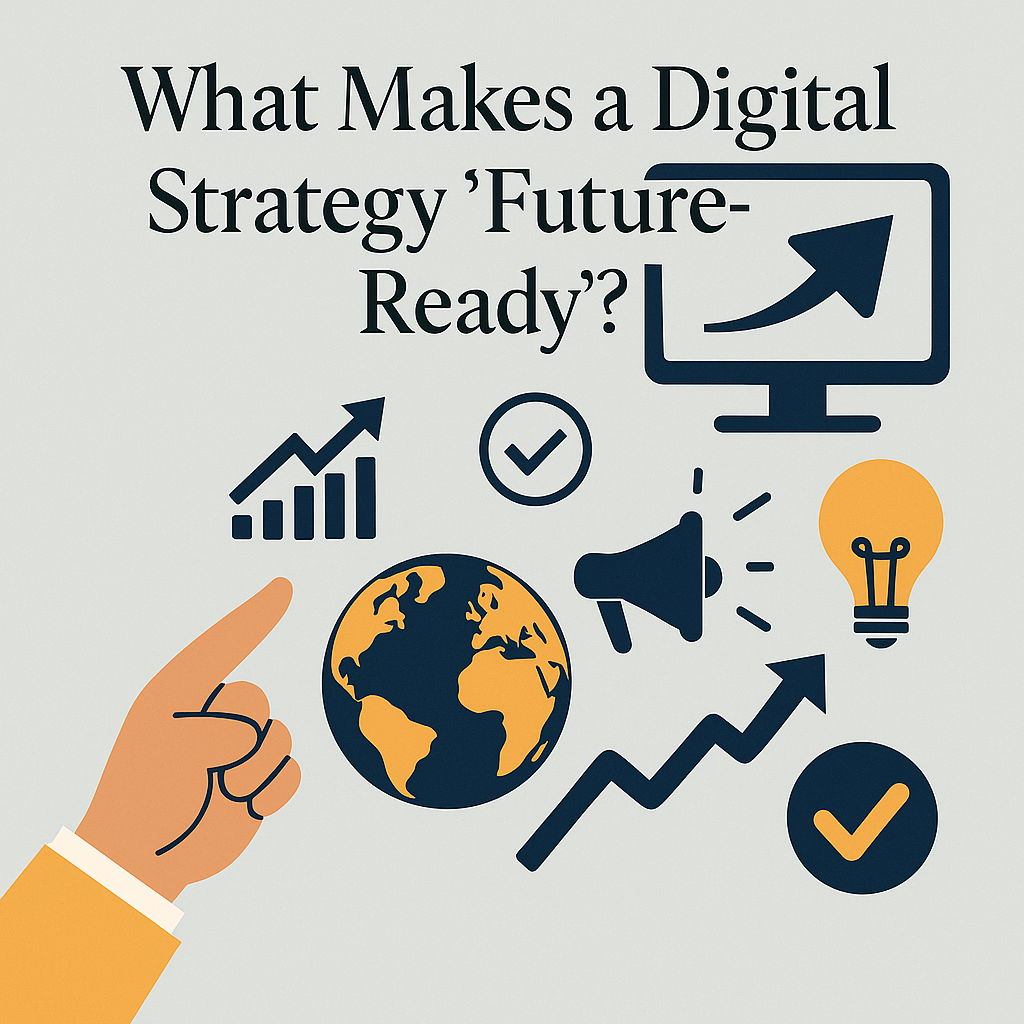In a world where trends shift overnight and platforms rise and fall in a blink, having a digital strategy isn’t enough—it needs to be future-ready. But what exactly does that mean?
A future-ready digital strategy isn’t about chasing every trend. It’s about building a strong, agile foundation that can adapt, grow, and thrive no matter what the digital world throws at it. Let’s explore what makes a digital strategy resilient, relevant, and ready for tomorrow.
1. Customer-Centric at the Core
At its heart, a future-ready strategy prioritizes the customer experience. It’s built on a deep understanding of audience behavior, preferences, and needs—not assumptions.
- Use real-time analytics to track behavior shifts.
- Build journey maps that go beyond a single channel.
- Constantly update your audience personas.
✅ Future-ready tip: Personalization should go beyond first names—anticipate user needs based on context, habits, and lifecycle stage.
2. Platform-Agnostic Flexibility
New platforms are always emerging. Today it’s TikTok and LinkedIn newsletters; tomorrow it could be something entirely new. Your strategy should be able to pivot without rebuilding from scratch.
- Focus on content adaptability, not just platform-specific formats.
- Use omnichannel frameworks.
- Don’t be overly dependent on one algorithm or ad platform.
3. Built-In Data Intelligence
A strategy without data is just a guess. A future-ready one builds in data feedback loops to learn, improve, and optimize every step.
- Set up strong tracking infrastructure (Google Analytics, GTM, heatmaps, etc.).
- Use data not only to report but to predict.
- Integrate first-party data into your planning as third-party cookies phase out.
✅ Bonus: Incorporate predictive analytics and AI-assisted insights for proactive decision-making.
4. Scalable Content Ecosystem
Content is still king—but tomorrow’s king needs to wear multiple hats. A scalable content system ensures your brand has a consistent voice while easily adapting formats across channels.
- Plan content with repurposing in mind (e.g., turn a webinar into 5 LinkedIn posts, 1 blog, and a YouTube short).
- Use templates and brand kits to maintain visual consistency.
- Build a content calendar that blends evergreen with trend-reactive pieces.
5. Automation and Smart Workflows
Time is your most limited resource. Future-ready strategies embrace automation not just to save time—but to improve performance and scale.
- Automate lead nurturing, email segmentation, and reporting.
- Use AI tools to assist with content creation, A/B testing, and SEO optimization.
- Streamline your marketing stack for smoother collaboration.
6. Inclusive and Ethical by Design
As audiences become more diverse and socially aware, digital strategies must account for accessibility, inclusivity, and ethical standards.
- Use accessible design practices (color contrast, screen reader support).
- Respect data privacy and consent laws (like PDPA, GDPR).
- Champion authentic representation and responsible messaging.
7. Resilience Through Agility
A future-ready strategy assumes change is coming—and is prepared to act fast.
- Use scenario planning to anticipate shifts (economic, platform, audience).
- Adopt an agile marketing mindset: test, learn, adapt.
- Conduct regular digital audits to stay aligned and updated.
Final Takeaway
A future-ready digital strategy isn’t a fixed blueprint—it’s a living, evolving system built for resilience, insight, and human connection. By focusing on customer understanding, flexible tech, intelligent data, and ethical practices, your brand can confidently move through 2025 and beyond.
Ask yourself: If a major platform disappeared tomorrow, would your strategy survive? If yes, you’re probably already future-ready.


Leave a Reply